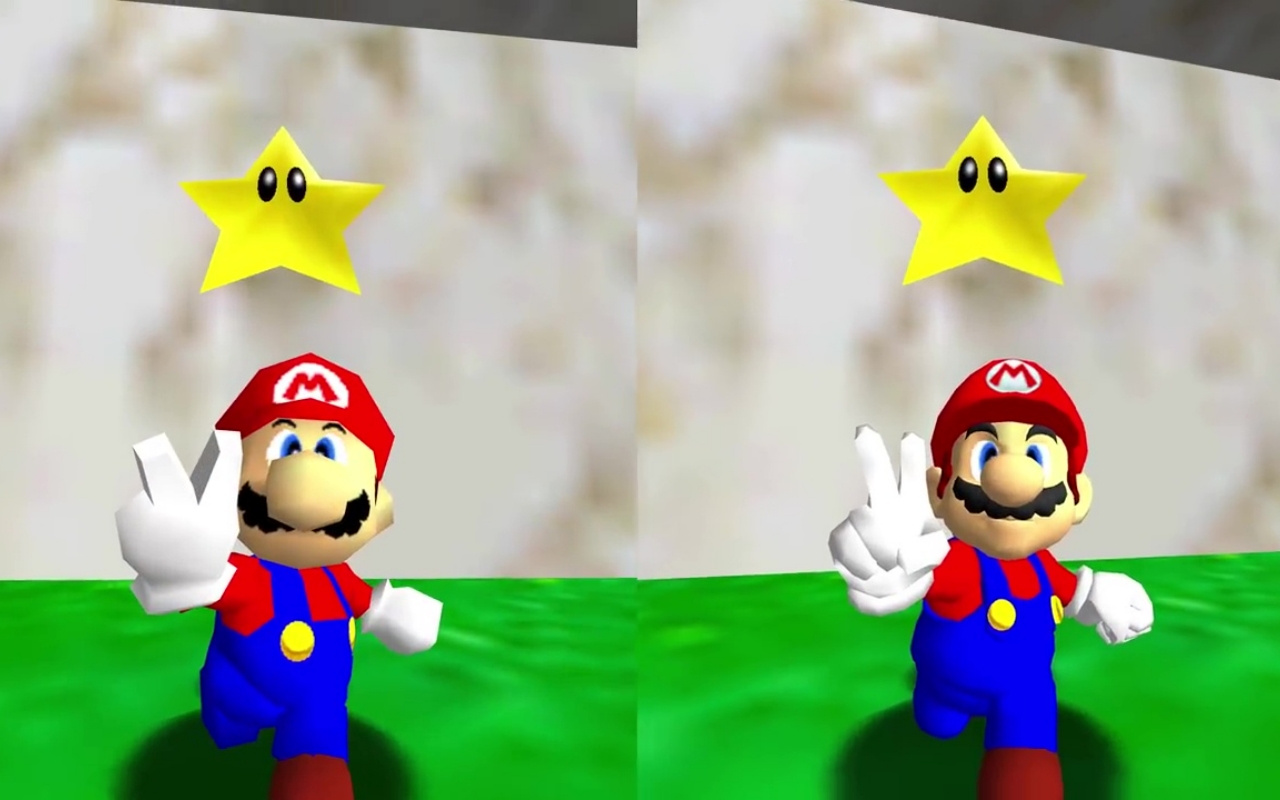




In order to access PUs and control Mario's position within them, it's important that Mario's speed is an integer multiple of 2^18, or 1 QPU (2^18 is equivalent to a point 4 PUs away, so we refer to it as 1 quadruple parallel universe -> QPU). Some things are still present however, like paintings in the castle. In addition to being invisible, there are no walls, no water, and most loaded objects are gone as well. These copies, which we've been calling Parallel Universes (PUs), contain the exact same layout of floor and ceiling collision triangles as in the real map, but most everything else is missing. It turns out that in addition to the collision map present in the level, there are also an infinite number of invisible copies of the collision map spaced out in a 2D grid, extending to infinity. This behavior is often confused with Mario going out of bounds, but that's actually not the case. On console, the game typically freezes, but on emulators and even Nintendo Virtual Console, Mario can warp to a weird invisible area. Many players have noticed that by BLJing in certain spots, such as on an elevator, it's possible to get strange behavior to occur. The ability to enter the moat door underwater comes from a glitch that has long been known, but poorly understood. This discovery led to the completion of the game with only 16 stars. A second, similar glitch allowed Mario to get through the 30 star door: as Mario walked up to the side of the door using MIPS, letting him go while pressing Z gave Mario a sort of push, which put him on the other side of the door (an alternative, harder, and slower method was to let go of MIPS just before the door, and jump between it and the door, which would also push Mario through). When used with the entry to the part of the basement with the 30 star door, MIPS could actually be taken right up to that place. This would put MIPS on both sides of the door, and Mario could jump out and grab him from the "wrong" side. However, a glitch was discovered that allowed Mario to merge MIPS with any "normal sized" door. The rabbit was not meant to go anywhere outside the "green" part of the basement: Mario could not open a door and carry MIPS at the same time. MIPS is a rabbit who appears in the basement once Mario collects 15 (and later, 50) stars usually, Mario grabs him, takes his star, then goes on with the rest of the game. Though now an obsolete trick, MIPS was once necessary in any low% run. 12 Units is the Convergent Speed Cap for slow swimming. His speed will decelerate from 27.5 Units to 12 Units. That's just how the mechanics of slow swimming work. Once Mario begins to swim slowly, his speed will also begin to decelerate. Convergent Speed Cap: This example continues from the Water-Pluging example above.It's not possible to obtain any value higher than that. This is the Absolute Speed Cap for slow swimming. No matter how much speed was retained, his speed is set to 27.5 Units. After the water-pluging state is over, he enters his slow swimming state. Water-pluging will cause his speed to decrease by 1 Unit per frame. (Entering his fast-swimming state is possible with correct timing of A presses.) If Mario has speeds >= 134 just before the first frame of water-plunging, ~1/4th of his original speed is retained. Absolute Speed Cap: While holding A, when Mario lands in water from a falling state, he will water-plunge (landing in water) for a certain number of frames (the amount of frames depend on the type of falling state in which enters the water) and then he enters his slow swimming (flutter kick) state.


 0 kommentar(er)
0 kommentar(er)
